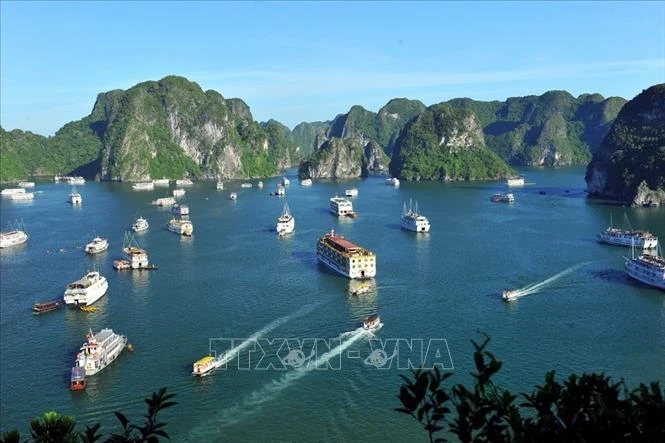
Quang Ninh (VNA) – The northern province of Quang Ninh has planned to develop environmentally friendly energy industries and maintain its status as a national energy hub, particularly in wind power and LNG (liquefied natural gas) electricity in the northern region.
According to a planning approved by the Prime Minister for the 2021-2030 period with a vision to 2050, Quang Ninh aims to gradually transition towards clean and renewable energy development.
In the current context of climate change, the development of green and renewable energy is a crucial issue that countries are concerned about, and holds a significant position in sustainable economic development orientations.
Quang Ninh, with its coastal advantages, has significant potential for developing green energy and renewable energy. Over the recent years, alongside the enhancement of comprehensive infrastructure systems, the locality has paid heed to conserving and promoting sustainable values related to the natural environment. Developing renewable energy is one of the priorities that Quang Ninh always focuses on.
The province currently boasts 250 kilometers of coastline, coupled with the best national electricity transmission and infrastructure connectivity systems, which provide a solid foundation for developing wind power energy.
According to the Institute of Energy under the Ministry of Industry and Trade (MoIT), Quang Ninh has excellent potential for wind power development (onshore and offshore), about 13,000MW along the coast and about 2,300MW onshore.
This energy source is most concentrated in Co To district and Mong Cai city. These areas benefit from their geographical location, extensive coastline, tropical monsoon climate, and abundant renewable energy resources, facilitating the localities’ exploitation, production, and development of renewable energy sources, thus ensuring long-term and stable electricity supply.
Thanks to the potential mentioned above, Mong Cai city itself has planned to develop renewable energy on Vinh Thuc and Vinh Trung islands soon.
With these advantages, Quang Ninh is now a national electricity production centre, supported by a diverse electricity transmission system. It boasts potential to generate approximately 13 GW of offshore wind power, helping it attract more investment into clean and renewable energy development.
The Prime Minister has approved the locality’s proposal to develop an LNG power project with a total capacity of its first period of 1,500 MW in Cam Pha city.
As the first power plant using imported LNG in the northern area, the project will be invested by Quang Ninh LNG Power JSC - a consortium of PV Power, a subsidiary of state-owned Petrovietnam; the Quang Ninh-based Vietnam Mechanical Assembly JSC (Colavi); and Japanese firms Tokyo Gas and Marubeni with a total investment capital of 47.4 trillion VND (over 1.86 billion USD). Once completed, it is projected to supply the national grid with approximately 9 billion kWh of electricity per year, and contribute around 57.7 trillion VND to the local budget over 25 years.
The project is expected to help realise the goal of building Quang Ninh into a growth hub, a gateway for international economic cooperation, and a source of fuel and energy supplies for the whole country.
The province has also proposed a plan for the development of wind power in the 2021 -2040, with a total capacity of 5,000 MW.
In the time to come, provincial authorities will concentrate on promoting green industrial development, rapidly increasing the contribution of high-tech, high-value-added processing and manufacturing industries, towards making the processing and manufacturing sector a main pillar of the local economy.
Attention will be paid to developing concertedly and rationally, and diversifying types of energy; prioritising the exploitation and effective use of sources of renewable, new and clean energy to reduce dependence on fossil energy sources; and maintaining its role as a national energy hub./.






















